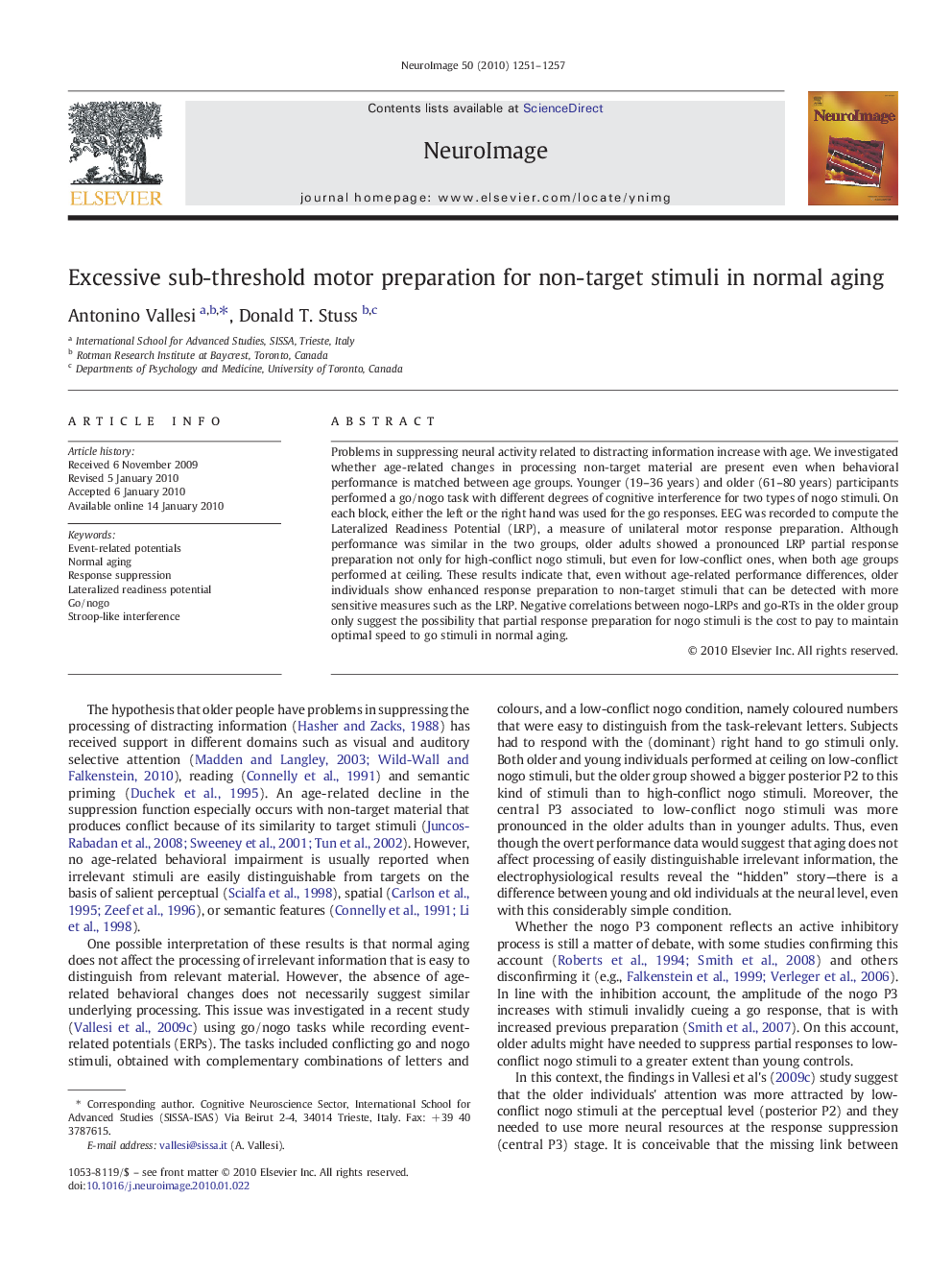| Article ID | Journal | Published Year | Pages | File Type |
|---|---|---|---|---|
| 6036738 | NeuroImage | 2010 | 7 Pages |
Abstract
Problems in suppressing neural activity related to distracting information increase with age. We investigated whether age-related changes in processing non-target material are present even when behavioral performance is matched between age groups. Younger (19-36Â years) and older (61-80Â years) participants performed a go/nogo task with different degrees of cognitive interference for two types of nogo stimuli. On each block, either the left or the right hand was used for the go responses. EEG was recorded to compute the Lateralized Readiness Potential (LRP), a measure of unilateral motor response preparation. Although performance was similar in the two groups, older adults showed a pronounced LRP partial response preparation not only for high-conflict nogo stimuli, but even for low-conflict ones, when both age groups performed at ceiling. These results indicate that, even without age-related performance differences, older individuals show enhanced response preparation to non-target stimuli that can be detected with more sensitive measures such as the LRP. Negative correlations between nogo-LRPs and go-RTs in the older group only suggest the possibility that partial response preparation for nogo stimuli is the cost to pay to maintain optimal speed to go stimuli in normal aging.
Keywords
Related Topics
Life Sciences
Neuroscience
Cognitive Neuroscience
Authors
Antonino Vallesi, Donald T. Stuss,
